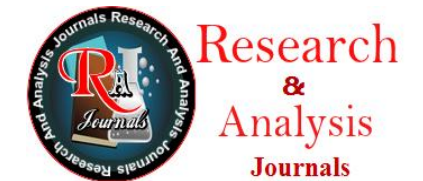Correlation between Stress Echocardiography and Coronary Angiography Results: Insights from 134 Cases
Downloads
Background: Stress echocardiography is widely used to assess myocardial ischemia. The objective of this study was to investigate the correlation between stress echocardiography results and coronary angiography findings, and to analyze the factors influencing these parameters.
Methods: This retrospective study analyzed 134 patients referred to the Cardiology A Department of Ibn Sina Hospital in Rabat. After confirmation of positive stress echocardiography, coronary angiography was performed. The inclusion criteria were patients aged 18 years and older with complete test results. Exclusion criteria included recent myocardial infarction, uncontrolled arrhythmias, severe aortic stenosis, heart failure class III or IV, inability to perform an exercise test, advanced respiratory diseases, history of coronary artery disease, and incomplete or poor-quality data.
Results: The average age of the patients was 58 years, with a predominance of men (53%). Indications for stress echocardiography were primarily symptoms of coronary artery disease in 87% of patients. The ischemic territory was mainly the left anterior descending artery (LAD) in 49.7% of patients. This is consistent with the findings observed in coronary angiography. 25.4% of patients with positive stress echocardiography had normal coronary angiography. Factors associated with non-significant angiographic coronary artery disease included younger age, female gender, absence of diabetes, absence of hypertension history, and negative stress ECG results.
Conclusion: The main advantages of stress echocardiography lie in its availability, low cost, and non-irradiating nature. Its main limitation is the subjective nature of its interpretation, which requires a skilled and qualified operator. Our study indicated that the results of stress echocardiography and coronary angiography had a positive correlation. This non-invasive examination is reliable for the diagnosis and prognosis of coronary artery disease.
European Society of Cardiology (ESC). 2023. Guidelines for the management of chronic coronary syndromes. ESC Clinical Practice Guidelines.
Beleslin BD, Ostojic M, Stepanovic J, Djordjevic-Dikic A, Stojkovic S, Nedeljkovic M, et al. Stress echocardiography in the detection of myocardial ischemia. Head-to-head comparison of exercise, dobutamine, and dipyridamole tests. Circulation. 1994;90(3):1168–76.
Original Article Clinical and Echocardiographic Characterization of Patients with False-Positive Stress Echocardiograms. Journal of Cardiovascular Imaging. 2019;21(2):123-130.
DOI: 10.4250/jcvi.2019.0109.
From, A. M., Kane, G., Bruce, C., Pellikka, P. A., Scott, C., & McCully, R. B. (2010). Characteristics and Outcomes of Patients With Abnormal Stress Echocardiograms and Angiographically Mild Coronary Artery Disease (<50% Stenoses) or Normal Coronary Arteries. Journal of the American Society of Echocardiography, 23(2), 207–214. doi: 10.1016/j.echo.2009.11.023.
FROM AM, KANE G, BRUCE Cet al. Characteristics and outcomes of patients with abnormal stress echocardiograms and angiographically mild coronary artery disease (< 50% stenoses) or normal coronary arteries. J Am Soc Echocardiogr, 2010; 23: 207-214.
Brewington SD, Abbas AA, Dixon SR, Grines CL, O’Neill WW. Reproducible microvascular dysfunction with dobutamine infusion in takotsubo cardiomyopathy presenting with ST segment elevation. Catheter Cardiovasc Interv 2006; 68:769-74. 20. Silberbauer J, Hong P, Lloyd GW. Takotsubo cardiomyopathy (left ventricular ballooning syndrome) induced during dobutamine stress echocardiography. Eur J Echocardiogr 2007; 9:136-8.
From AM, Prasad A, Pellikka PA, McCully RB. Are some false-positive stress echocardiograms a forme fruste variety of apical ballooning syndrome? Am J Cardiol 2009; 103:1434–1438.
Ha JW, Juracan EM, Mahoney DW et al. Hypertensive response to exercise: a potential cause for new wall motion abnormality in the absence of coronary artery disease. J Am Coll Cardiol, 2002;39:323-327.
From, Aaron M., Garvan Kane, MD, PhD, Charles Bruce, MD, Patricia A. Pellikka, MD, Christopher Scott, MS, and Robert B. McCully, MD. "Characteristics and Outcomes of Patients with Abnormal Stress Echocardiograms and Angiographically Mild Coronary Artery Disease (<50% Stenoses) or Normal Coronary Arteries." Journal of American Society of Echocardiography, 2010; 23: 207-214.
Rachwan RJ, Mshelbwala FS, Dardari Z, Batal O. False-positive stress echocardiograms: Predictors and prognostic relevance. Int J Cardiol 2019; 296:157–163. Labovitz AJ. The “myth” of the false positive stress echo. J Am Soc Echocardiogr 2010;23:215–216.
FLEISCHMANN KE, HUNINK MGM, KUNTZ KM et al. Exercise echocardiography or exercise SPECT imaging? JAMA, 1998 ; 280: 913-920.
Copyright (c) 2025 Ichrak FADAOUI, Zineb Agoumy, Aida Soufiani, Nesma Bendagha, Rokya Fellat

This work is licensed under a Creative Commons Attribution 4.0 International License.
All Content should be original and unpublished.



